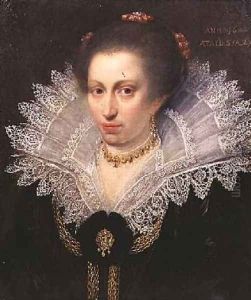(studio of) Moreelse, Paulus Paintings
Paulus Moreelse was a Dutch painter, born in 1571 in Utrecht, Netherlands, and died in 1638. He was a prominent figure during the Dutch Golden Age, a period in the 17th century when Dutch art, science, trade, and military were among the most acclaimed in the world. Moreelse was known for his portraits, as well as mythological and biblical scenes, showcasing his versatility and skill in different genres of painting.
Moreelse received his initial training from the painter Mannerist Joos de Beer and possibly also studied under the renowned Abraham Bloemaert. His style, however, was significantly influenced by the Italian Baroque, a result of his travels to Italy, where he was particularly impressed by the work of Caravaggio. This influence is evident in his use of chiaroscuro and a more naturalistic representation of figures.
Upon returning to Utrecht, Moreelse became an influential member of the Utrecht Guild of Saint Luke, serving multiple terms as its dean. His studio was prolific, and he taught several important Dutch painters, contributing to the development of the Utrecht School of painting. Despite his influence during his lifetime, Moreelse's work was somewhat overshadowed by that of his contemporaries and pupils, such as Gerrit van Honthorst and Hendrick ter Brugghen, who also embraced Caravaggio's style but with a more dramatic flair.
Moreelse's oeuvre includes a range of portraits, from individual likenesses to group portraits, which were highly sought after by the Dutch elite. These works are characterized by their refined elegance and attention to detail, qualities that made Moreelse a favored portraitist in his time. Beyond portraiture, his allegorical and mythological scenes are notable for their sophisticated compositions and the skillful depiction of fabrics and textures.
Despite his death in 1638, Moreelse's legacy continued through his students and the lasting influence of his works on the development of Dutch painting. His contributions are preserved in various museums and collections worldwide, offering insight into the artistic transitions of the Dutch Golden Age.
